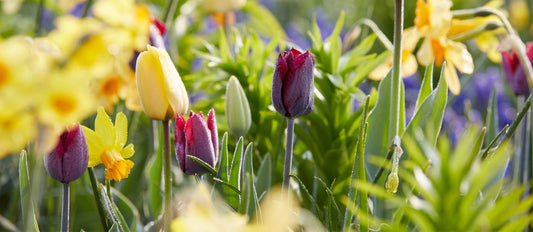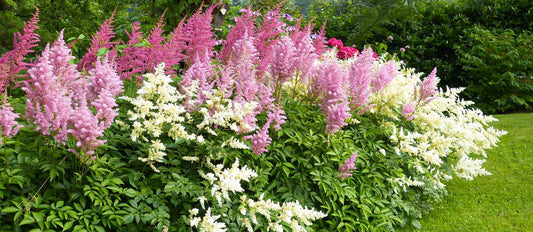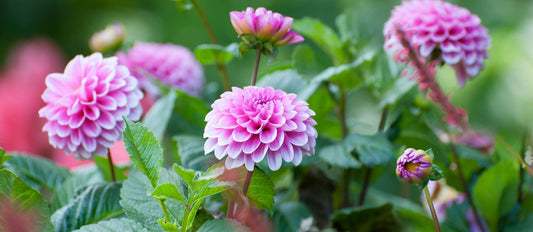Flower bulbs, who doesn't love them? Enjoy the vibrant colours and delicious scents in the spring. Planting flower bulbs is fun. Some prefer to plant bulbs only once and to have them come back every year. If so, then you want naturalising bulbs. We'll teach you everything you need to know about these exquisite, colourful plants.
What are naturalising bulbs?
Naturalising bulbs are flower bulbs or tubers that come back with more flowers each year. This means that you can leave them in the ground every year after they bloom. In the following year, more small bulbs or tubers will grow near the parent bulb, resulting in more flowers coming into bloom. Naturalising bulbs are often small-flowered bulbs. These include snowdrops, blue grape hyacinths or small-flowered variants of tulips or daffodils.
Often when we talk about naturalising flower bulbs, we hear the term "stins" plants. This is a collective name for naturalising bulbs and tubers and perennials with a great historical value. These flowering plants were seen as a status symbol because they were only planted around country estates and castles. Today, these plants can be found throughout Europe.
How do you plant naturalising bulbs?
The planting method for naturalising bulbs isn't that different to that of annual bulbs. However, naturalising flower bulbs do need more space to establish themselves. In every garden you can find a spot where flower bulbs or plants can be allowed to naturalise. Give the plants you intend to naturalise plenty of space to spread.
First make sure that a bulb or tuber has an undisturbed location for its optimum development. Plant the bulbs in a border between perennials or in your lawn. Note that the lawn should not be mowed until the above-ground part of the flower has died off completely. Ideally, this is 6 to 8 weeks after the bulb's flowering period.
Plant naturalising bulbs early in the autumn, preferably late September or early October. Most bulbs are already beginning to bloom in February. Of course, this depends on the species you are planting. Follow these steps when planting:
- Make holes 3 times as deep as the height of the bulb.
- Insert the bulb or tuber into the hole with the pointy end facing up.
- Then fill the holes with fresh potting soil and tamp it down lightly.
- Add water and let nature do its job.
Care of naturalising bulbs
The first bulbs emerge from the ground in February. They need little care. Simply water a bit during dry spells. It is not necessary to give extra nutrients because the flowers draw energy from the bulb. The flowers will bloom for a few months and then die off. It is important that you leave the plant alone after its growth period. Leave the (yellow) leaves in place. The plant needs them. It will die off on its own. The bulbs and tubers will then flourish in peace for a while. They establish themselves easily and you don't need to care for them.
Because several bulbs emerge when the flowers naturalise, bulbs can also be propagated. Carefully divide the root ball by loosening some of the bulbs or tubers. They can be planted elsewhere in the garden.
Read also: Top 5 golden flower bulb-perennial combinations. We give our top 5 combinations of naturalising flower bulbs and perennials.




